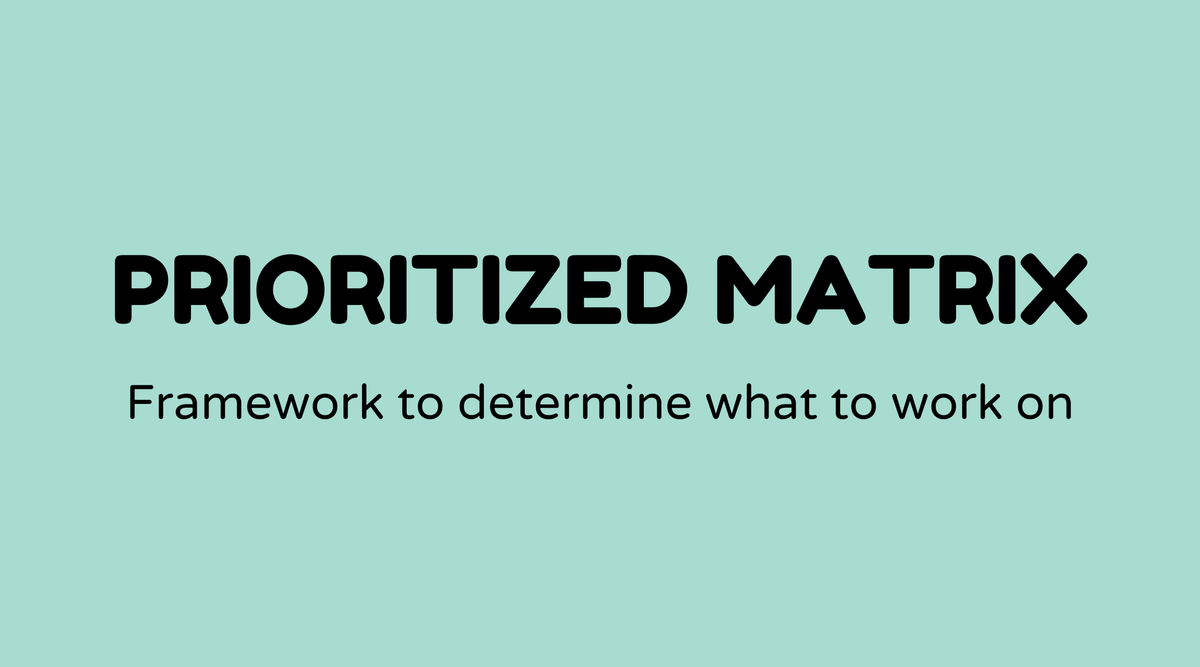Prioritization matrix

Overview of Prioritization Matrix:
A prioritization matrix is an essential resource that assists teams in refining their decision-making process by classifying tasks or projects according to urgency and importance. It serves as a straightforward method to organize and concentrate on what truly adds value. Inspired by concepts from the Eisenhower Matrix, it organizes items to make sure resources are effectively utilized. This tool is beneficial not only for businesses but also for anyone striving to impose order on their personal or professional tasks.
Understanding the details of such a matrix can enhance productivity, cutting through the clutter to clarify immediate priorities, items that can wait, and those that can be delegated or removed. For additional insights into effective prioritization techniques, consider exploring some excellent resources like this article on prioritization.
Why Prioritization Matrix Matters:
The value of a prioritization matrix lies in its ability to streamline overwhelming lists into manageable tasks. By offering clarity, it alleviates stress, boosts efficiency, and refines decision-making skills. Organizations that implement such frameworks often experience increased productivity and reduced obstacles. The capacity to prioritize enables businesses of all sizes to allocate resources wisely, ensuring that high-impact projects receive attention. This kind of strategic planning is essential in today’s fast-paced environment, where agility and quick responses can determine success.
What is a Prioritization Matrix:
Essentially, a prioritization matrix is a visual tool used for ranking projects or tasks. It features a grid layout that sorts items based on set criteria—usually urgency and importance. The most common structure divides the grid into four sections, helping to identify tasks to address first, those to schedule, those that can be delegated, and those to disregard. It aids in visualizing priorities, making it simpler to focus on what contributes to success and goal achievement.
How to Create a Prioritization Matrix:
Crafting a prioritization matrix is a straightforward exercise:
- List Tasks/Projects: Begin by noting all tasks or projects needing attention.
- Define Criteria: Decide on the benchmarks for prioritization, typically urgency versus importance.
- Create Your Matrix: Draw a grid with urgency on one axis and importance on the other.
- Categorize Each Item: Position each task into a section based on how urgent and important it is.
- Action Plan: Formulate a strategy for each category. Urgent and important tasks should be addressed first, while less critical ones can be scheduled for later or delegated.
Here’s a quick example:
| Urgency/Importance | High Urgency | Low Urgency |
|---|---|---|
| High Importance | Do First | Schedule |
| Low Importance | Delegate | Eliminate |
Sample Agenda of Prioritization Matrix Workshop:
If you plan to conduct a workshop to familiarize your team with the prioritization matrix, here’s a recommended agenda:
- Introduction (10 mins): Describe the concept and its significance.
- Criteria Discussion (15 mins): Discuss and decide on criteria relevant to your organization.
- Task Listing (20 mins): Have participants jot down their tasks/projects.
- Matrix Creation (30 mins): Assist participants in making their matrices.
- Action Planning (25 mins): Help participants draw up action plans based on their classifications.
- Q&A Session (20 mins): Encourage questions and insights.
Examples of Prioritization Matrix:
Consider a scenario in a software development company:
- Urgent Bug Fixes: High urgency and importance, thus tackled first.
- Feature Development: High importance but low urgency, scheduled for later.
- Administrative Meetings: Low importance and urgency, often delegated.
- Outdated Reports Reviews: Low in both, may be eliminated completely.
Each department can adapt variations suited to its specific needs. For example, marketing teams might prioritize campaigns based on audience impact and launch deadlines.
FAQs
How does a prioritization matrix differ from a to-do list?
- A prioritization matrix classifies tasks based on importance and urgency, offering a strategic perspective, while a to-do list simply enumerates tasks without prioritization.
Can a prioritization matrix be useful for personal application?
- Absolutely! It's beneficial for managing personal responsibilities, helping individuals concentrate on what truly matters.
Is it necessary to adhere strictly to the matrix?
- The matrix serves as a guideline to inform decision-making, but adaptability is important to accommodate changing priorities.
How frequently should a prioritization matrix be updated?
- Regular updates—weekly or monthly—ensure it stays relevant and responsive to shifting circumstances.
What tools are available for creating a prioritization matrix?
- Tools like Microsoft Excel, Miro, or Trello have templates that facilitate the construction of a prioritization matrix.
Can a prioritization matrix be effective for small teams?
- Yes, small teams can greatly benefit from ensuring that the most impactful tasks are addressed efficiently.



